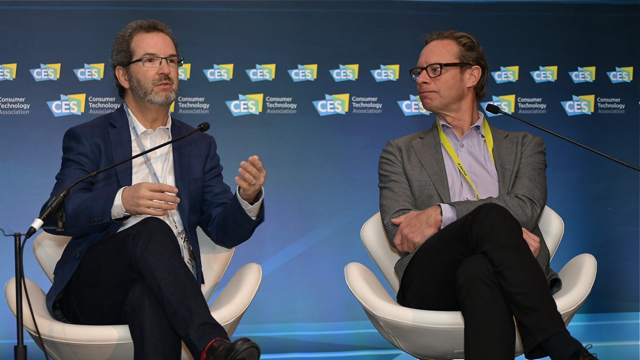Connected Health, Medically Validated Wearables On the Way
January 5, 2017
Digital health, including wearables, is coming, but not everyone is pleased. Qualcomm Life vice president/chief medical officer Dr. James Mault reports attending a June 2016 AMA conference where the keynote, by AMA chief executive Dr. James Madara, was titled “Digital Health: The Snake Oil of the 21st Century.” Although some doctors are stonewalling digital tools, they are still making a valid point: using wearables to make crucial, sometimes life-or-death decisions requires a higher bar than fitness trackers.
“If you expect doctors to take care of you without actually seeing you, we need to know that data is accurate and reliable,” said Mault (pictured below left). “Otherwise bad things can happen.” He predicts that, “over the next few years, there will be a lot of conversation about raising the bar on accuracy of the wearables and if we can use them to make medical decisions.”
The future use of medical devices is inevitable, say the experts. “We’re at a big moment for completely transforming how we handle healthcare,” said Jeroen Tas (above right), chief executive of Connected Care and Health Informatics, Philips. He reports that his company sees the future in “connecting patients with their caregivers” and “devices that give patients information and insights.”
His company is already delving into uses with artificial intelligence and augmented reality as well as wearables. But Tas stresses the need for “accurate devices and algorithms that validate them. “So yes, we need regulation because lives depend on it,” he said. “And you need a secure connection to the cloud. So a lot of elements need to take place.”
Connecting patients and their devices, medical records and diagnoses to a wide range of healthcare providers is a key factor in how the future of healthcare will work. Mault notes that 5G will create “the ubiquity of connectivity” with very low packet loss and latency, and high reliability. “That will enable robotics and VR/AR as it relates to healthcare, which we’ll start to see at CES this week,” he said. “It’s a forerunner of what we’ll see in 10 years.”
Recently, Intel Health and Life Sciences Group global marketing director Bryce Olson lived through an experience that validates the power of connectivity. Diagnosed with a very fast-growing metastatic prostate cancer, Olson was given 21 months to live and decided to spend his last days at Intel investigating genomics.
“Intel is doing collaborative cancer care, and I went in and demanded genomics,” he said. With the resultant data, Olson was able to find a clinical trial for which his genome was a “perfect molecular match” for the drug being tested. “I want to get this kind of precision medicine to as many people as possible,” Olson said.
Challenges to achieving widespread adoption include a way to interpret the data found in medical records, something that Tas says his company is working on. “We use AI to interpret data from medical records, including the doctor’s notes to create a true clinical context,” he said. “You can quantify and make sense of it.”
An overload of data is, however, as much of an impediment as no data at all. “No doctor wants to look at 3,000 blood pressure measurements in his in-box every morning,” said Olson. “Same thing with genomics and other blue sky visions. There’s a lot of heavy lifting to be done in looking at how to manage this new flow of information and, as a physician, how to use it in day-to-day work.”


No Comments Yet
You can be the first to comment!
Sorry, comments for this entry are closed at this time.